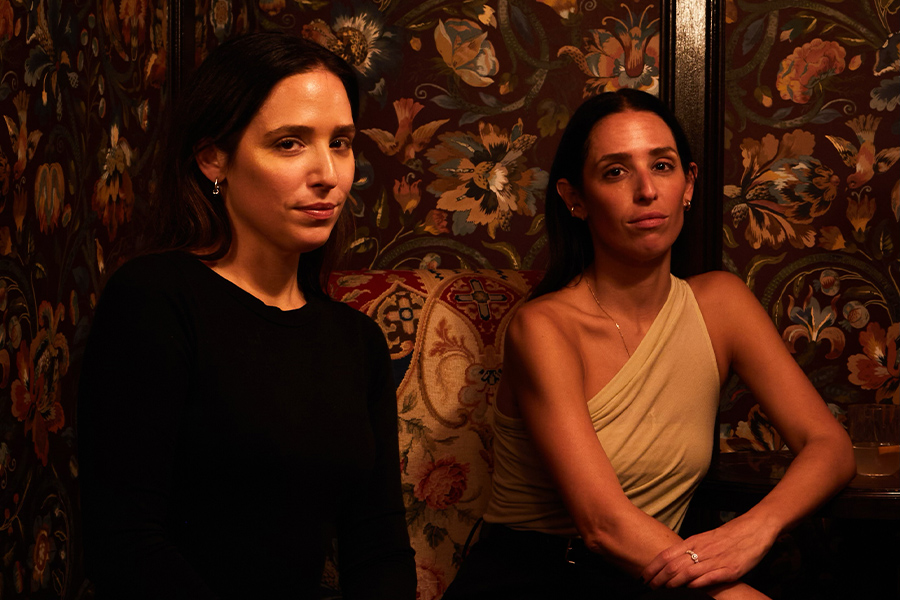Inspired by the limitless possibilities of technology, SOFTlab founder Michael Szivos has found the sweet spot between architecture and human connection with his vibrant, otherworldly installations. The nimble team of seven architects works seamlessly within the digital space, molding colors and shapes to make art that is not only accessible to the public but also stimulates the senses. Beyond aesthetics, Szivos sometimes sees his projects as life-altering, and at the very least, starting an intentional dialogue between art and technology.
Human Connection
SOFTlab’s work promotes fully immersive experiences that are centered around a sense of discovery, challenging viewer’s perspectives as they move through the installation. “How people engage with our work is important to us,” he says. “Even when it isn’t literally interactive, we still think about the materiality and the layers of the piece.” Mirror Mirror in Alexandria, Virginia, for instance, is a half dome that acts as a beacon from afar. Outside, a monochromatic mirror reflects the urban environment, while deep within, a vivid color spectrum reveals another layer of interest. “We steer away from the traditional pedestal you walk around,” he says. “Instead, we create something where people become authors generating their own memories.”
Magical Moments
The complex, behind-the-scenes mechanics of developing an interactive work also provides the canvas to foster magical moments. For Nautilus in New York’s South Street Seaport, SOFTlab partnered with car company Lincoln to create an installation that engages all five senses. By touching one of 96 poles, a visitor activates one of the eight tones that plays back in a sequence with lights in each pole responding to the sound. When multiple visitors touch the poles at the same time, “they come together to create an unpredictable symphony of sound and light,” he says. By playing with multiple senses, “we pushed the boundaries of what we have typically done in the past.”
Changing the Conversation
With each new project, Szivos and his team are attuned to the discourse around the misuse of technology. Whether it’s the snaking Spectralline crystal art installation in the 21c Museum Hotel Lexington or the flat-surface centerpiece at Microsoft’s new office in Atlanta, he is constantly challenging expectations. “People see our work and think, ‘Why can’t everyday things be made like this?’” The purpose behind each work is to help people rethink how things can be produced, built, or exist in the world. “If technology is used in the right way, it’s empowering and pushes things in more positive, interesting, and beautiful directions.”

Clad in recycled paper, the colorful Plume hangs above the entrance at Etsy’s Brooklyn, New York headquarters
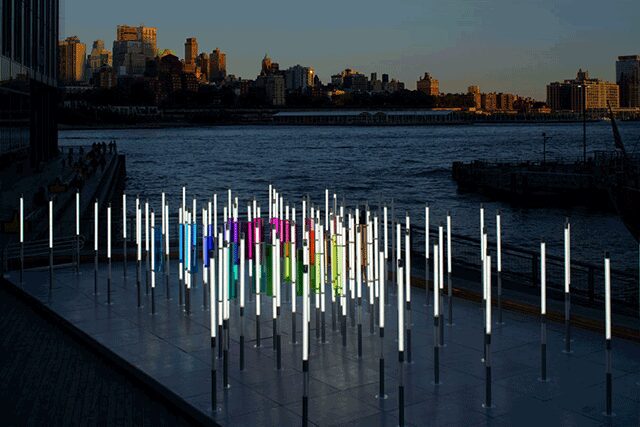
At the interactive Nautilus installation at New York’s South Street Seaport, visitors activate a sequence of lights and sounds by touching one of the 96 poles
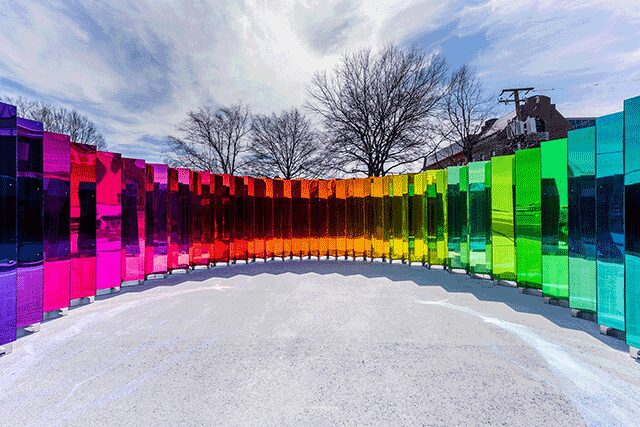
Mirror Mirror in Alexandria, Virginia reflects the urban environment on the outside, with a vivid spectrum of color inside
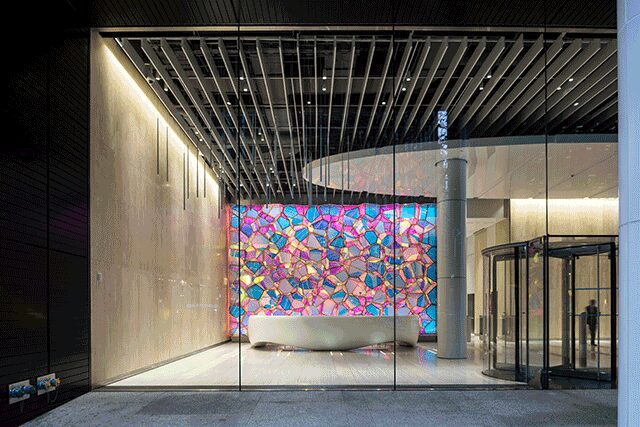
A geometric crystalline installation at One State Street in Lower Manhattan cycles through a wide range of colors
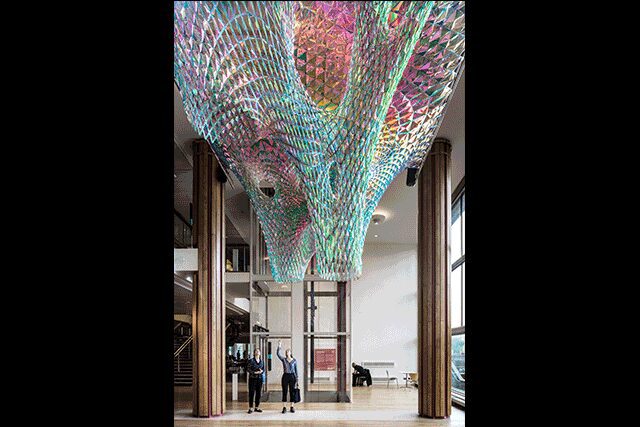
Ventricle at Southbank Centre in London is shaped like the portion of the heart from which it gets its name
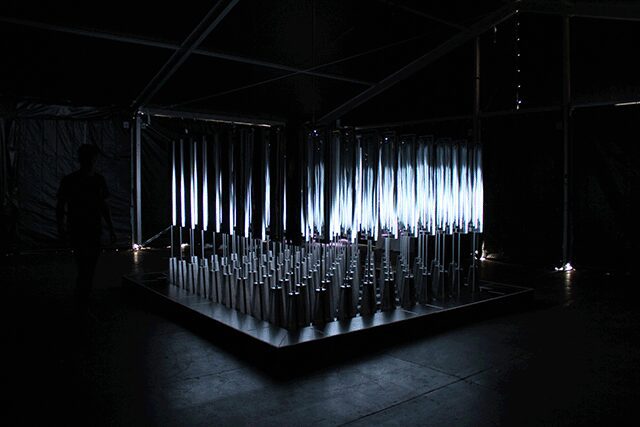
Commissioned for the Panorama Music Festival in New York, Volume comprises a grid of 100 mirrored panels that each rotate individually


